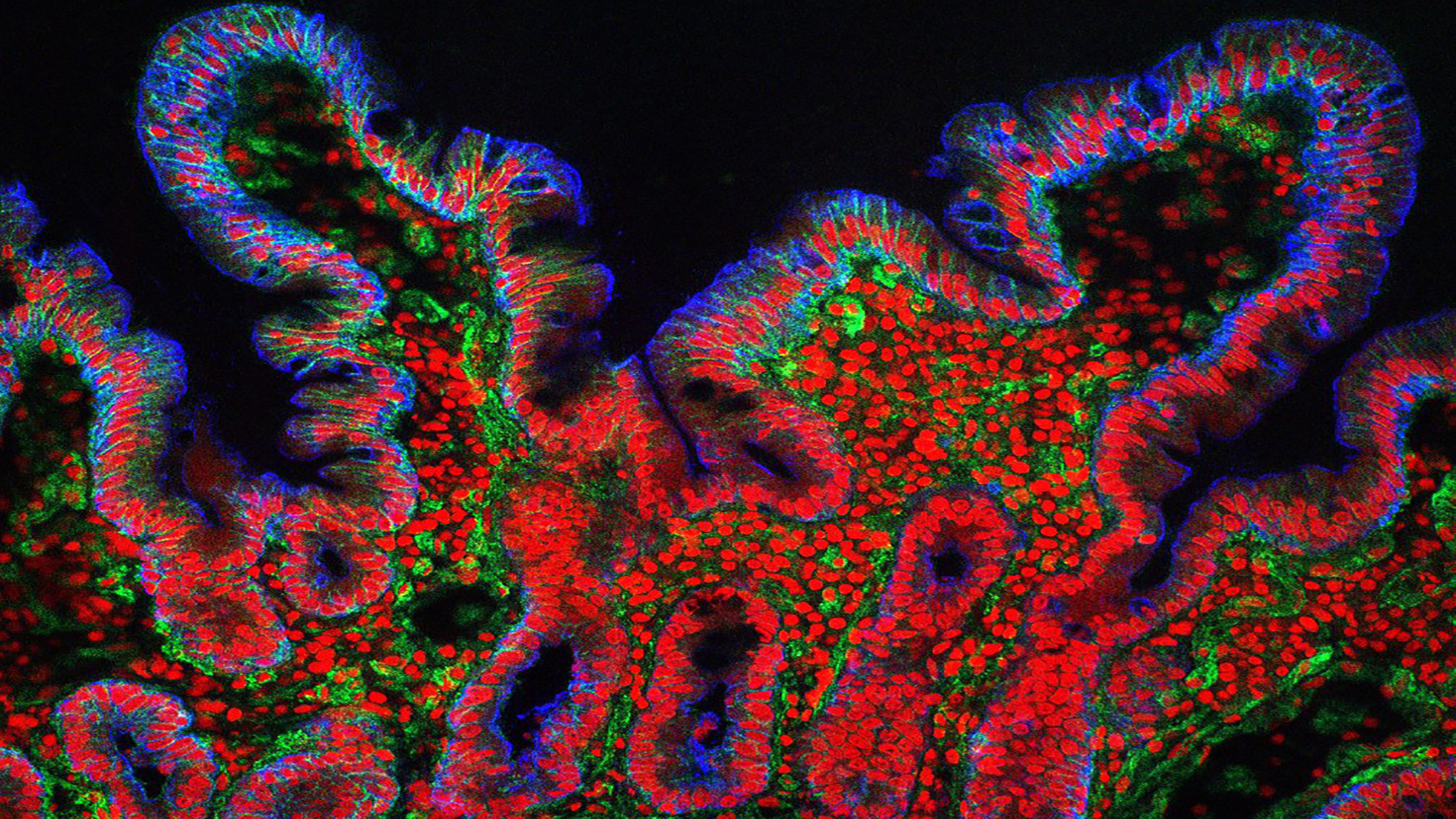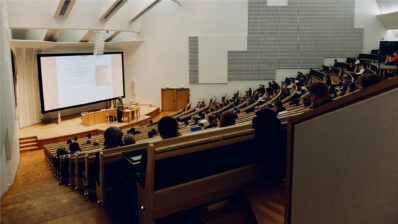The intestine is the part of the digestive system in charge of the absorption of nutrients. This function is carried out through its epithelium, which is formed by a single layer of cells folded over itself, creating cavities called crypts and finger-like protrusions called villi. The intestinal epithelium has been a very interesting organ for stem cell biologistsbecause of its special hierarchical conformation: intestinal stem cells reside at the bottom of the crypts and their progeny move upwards to the surrounding villi while maturing and differentiating, thus giving rise to all the different cell types forming the epithelium.
Despite the vast knowledge obtained about intestinal stem cells over the years, their origin is still puzzling.
The intestinal epithelium is formed by a single layer of cells folded over itself, creating cavities called crypts and finger-like protrusions called villi
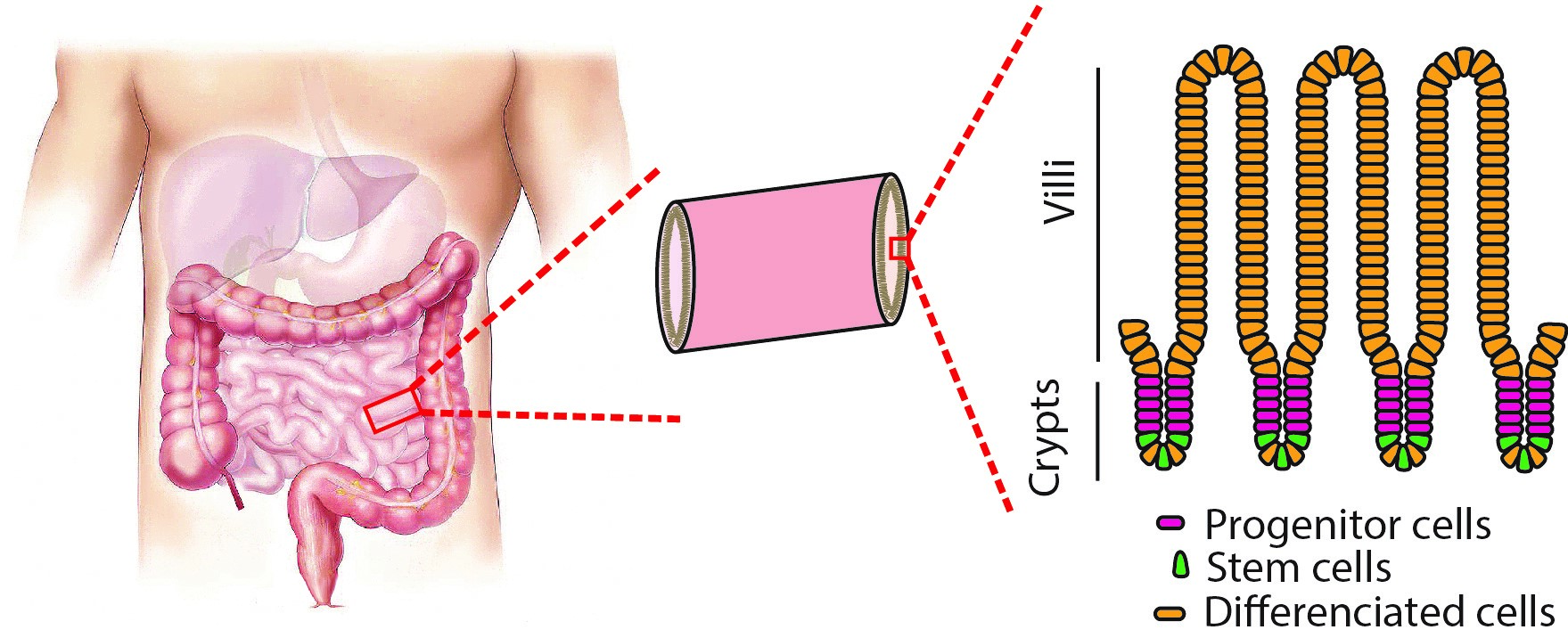
During embryonic life, the intestine looks a bit simpler: crypts have not been formed, and instead villi are separated by a continuous region composed of proliferative cells which look very similar to adult intestinal stem cells. It is therefore intriguing to understand how adult intestinal stem cells are specified during embryonic life. Do they come from unique and specialized stem cell-precursors or in contrast are they randomly selected from a pool homogeneous fetal cells? In other words: is this a hardwired process, where a cell is pre-destined to become a stem cell from the very beginning? Or either is it an induced process, where circumstances, like proper niche signalling, could induce any cell to become a stem cell?
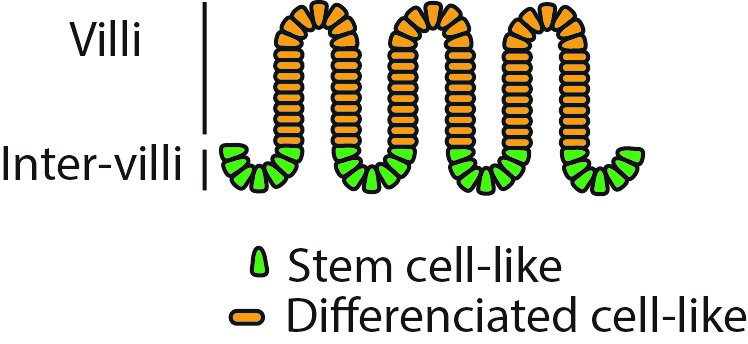
The researchers wanted to find out whether adult stem cells com from specific stem cell-precursors or whether they are randomly selected from a pool homogeneous fetal cells.
Jordi Guiu, an Hospital del Mar Medical Research Institute (IMIM) alumni currently working in the team of Kim Jensen at BRIC (University of Copenhagen), has used unbiased quantitative lineage-tracing approaches, 3-dimensional imaging biophysical modelling and intestinal transplantation experiments to answer this question. Their work was published in Nature last May.
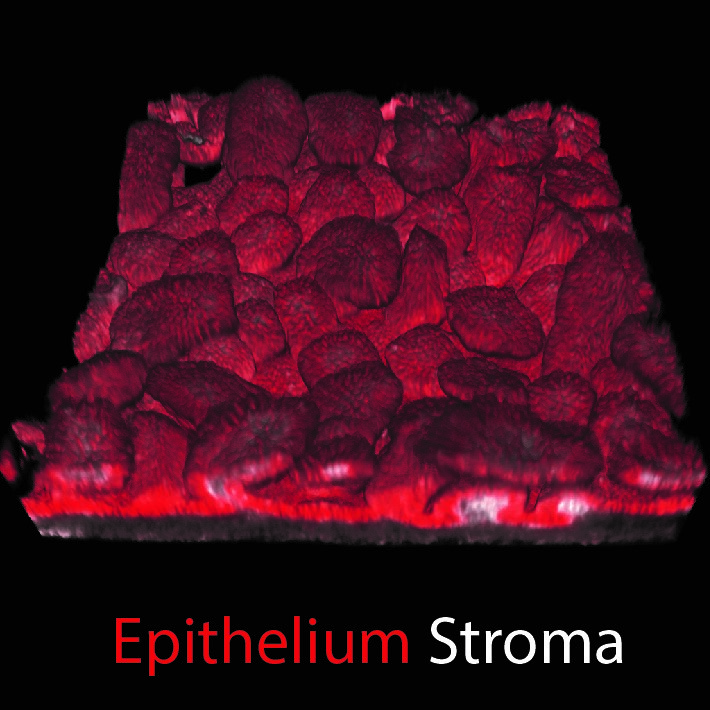
They demonstrated that in the fetal epithelium ongoing tissue morphogenesis leads to a dynamic exchange of cells between the villi and the intervillus, which means that adult intestinal stem cells are randomly selected from the pool of cells forming the fetal intestinal epithelium. Any fetal intestinal epithelial cell could become stem cell, under the appropriate stimuli.
“We could say the intestine is governed by a democracy rather than an aristocracy: all cells are born equal and have the same probability to become the cell sitting at the apex of the hierarchy”, says Guiu, who did his PhD at the Stem cells and cancer research group led by Anna Bigas.
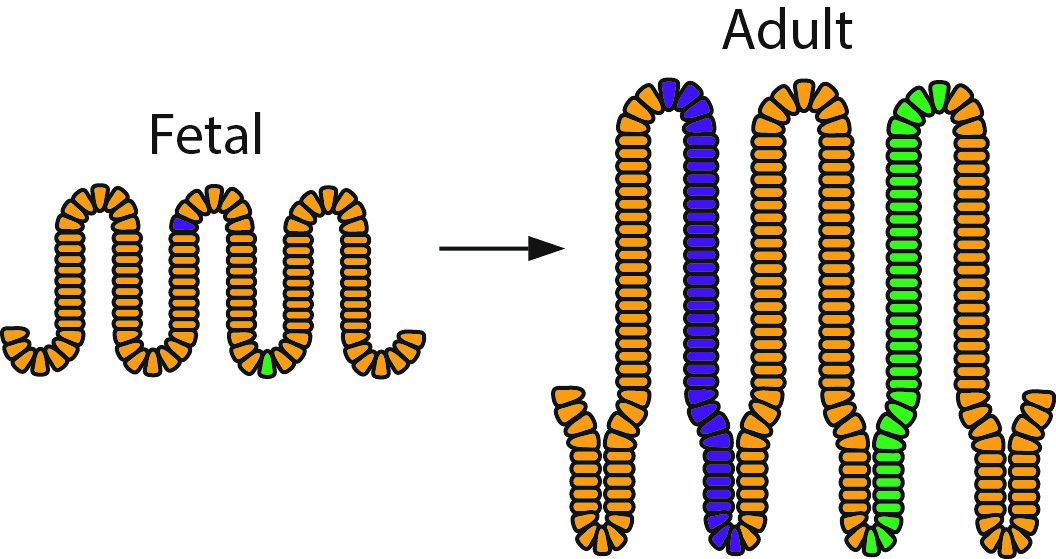
Bigas, a group leader at the IMIM, comments: “The understanding of how somatic stem cells are originated is a crucial step for future regenerative medicine applications. After his PhD period in my lab investigating blood stem cell origin, I am proud to see how Jordi has scientifically grown in the fantastic BRIC environment and used different state-of-the-art technologies to make this seminal discovery on the specification of intestinal stem cells”.
The work has also been of interest to other researchers at the Barcelona Biomedical Research Park (PRBB). Miki Ebisuya, a group leader at the European Molecular Biology Laboratory – Barcelona (EMBL), adds: “I think the findings themselves are important and surprising; that any cell in the fetal intestine can become an adult intestinal stem cell means that a villus can fission to produce a new stem cell niche”.
“I was also impressed to see how quantitative their data and discussions are. Normally it’s difficult to be quantitative if you deal with an in vivo, long-term developmental process, but the authors put considerable effort into measuring the tissue volume, cell kinetics, and geometrical parameters, even making a biophysical model to compare the simulated dynamics with experimental observations”, concludes Ebisuya.


